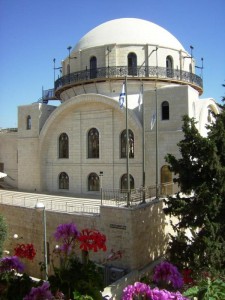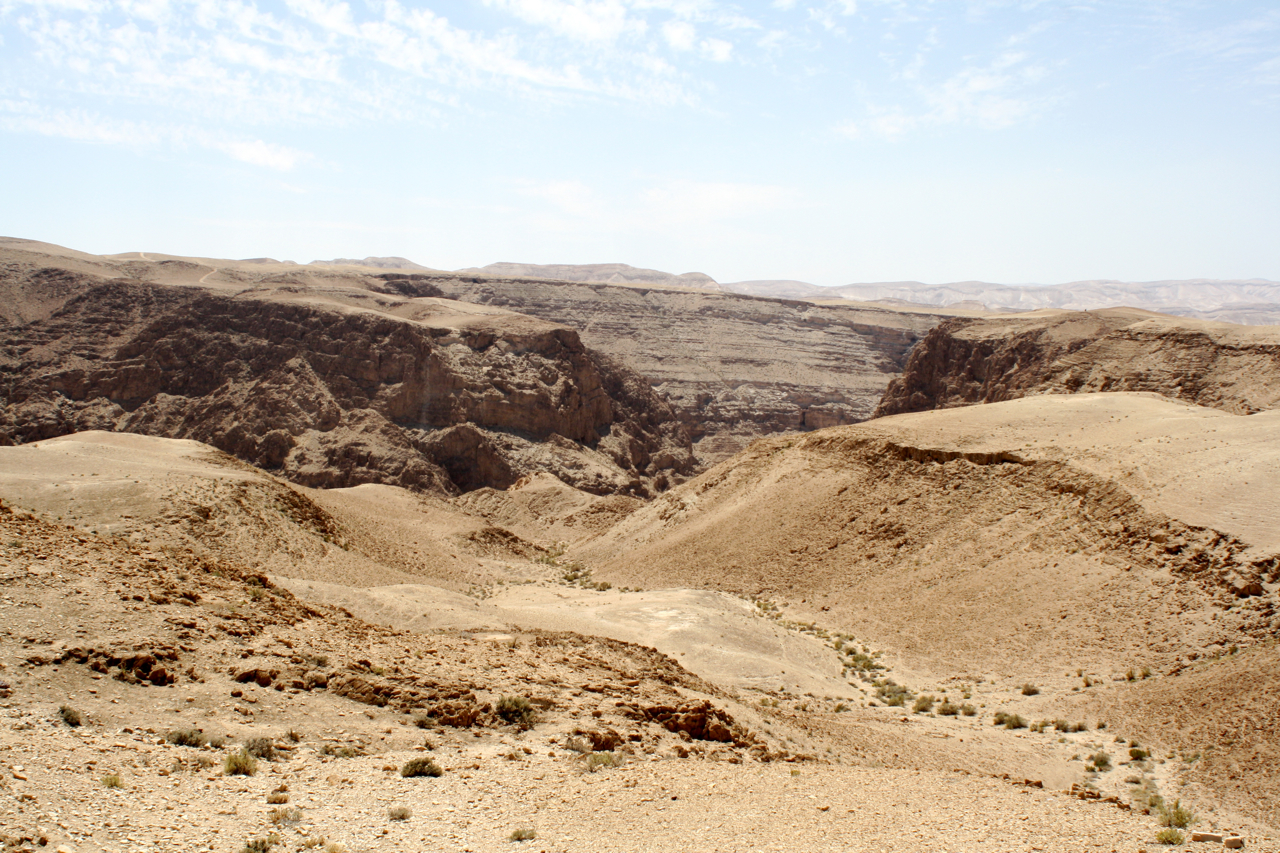
In 1701 a number of Eastern European Jews risked all to return to Jerusalem and join the small Jewish community then living in the Holy City in humiliating and dire circumstances.
They were led by the great sage and saint Rabbi Yehuda Hachasid. He died almost immediately upon his arrival in Jerusalem, but his followers persisted and built a modest synagogue in the Old City of Jerusalem. That synagogue was later destroyed and was reestablished modestly. It was known as the Churva (the ruins) named after Rabbi Yehuda Hachasid.
With the advent of a larger immigration of Eastern European Ashkenazic Jews to Jerusalem in the nineteenth century it was rebuilt again, this time in a much larger and more imposing fashion. Its imposing dome and soaring window arches became the landmark of the time for Jewish Jerusalem.
Much of the funds necessary to build such an imposing structure were donated by Baron Edmond de Rothschild of Paris, the premier Jewish philanthropist of that time. The Churva synagogue became the official home of all Jewish functions in Jerusalem in the late nineteenth and early twentieth centuries.
The Chief Rabbis of the then Palestinian Jewish yishuv were installed there as well as the welcoming Sabbath ceremony for the first British High Commissioner for Palestine, the Jew, Sir Herbert Samuel. Theodor Herzl and Baron Rothschild visited the synagogue as did numerous other dignitaries, both Jewish and non-Jewish. Its towering dome became the symbol of Jewish presence in Jerusalem for over eighty years.
In 1948 the Jordanian Legion captured the entire Old City of Jerusalem and leveled the Churva synagogue together with all of the other Jewish houses of worship in the Old City. The Jordanian commander boasted that he had permanently ended a millennium of Jewish presence in the Old City with the destruction of the Churva synagogue.
However, as all of the enemies of Israel have been prone to do over the ages, he spoke too soon.
Nineteen years later the Jordanians were driven out of the Old City in the Six-Day War that they initiated into Jerusalem and a new bustling and vibrant Jewish quarter was rebuilt in toto – except for the Churva synagogue. A window arch of the building was restored and rose above the city as a reminder of the great synagogue that once stood there.
After over forty years of neglect, world Jewry, especially from Ukraine and Eastern Europe, rallied to the cause of rebuilding the Churva synagogue. The project was successfully completed and on March 15, 2010, the grand rededicated synagogue was opened for prayer and meeting.
The building is more magnificent than ever, though it is a closely accurate reconstruction of the building that was erected in 1864. It glistens with majesty and is suffused with Jewish nostalgia and pride. Its rededication ceremonies were emotional and inspiring. Just as the Jewish people has risen from the ashes of the last century so has the Churva synagogue.
Naturally, the reconstruction and rededication of the Churva synagogue does not sit well with our Palestinian Arab cousins. All sorts of hysterical pronouncements that we were about to destroy the al-Aqasa mosque were publicized throughout the Moslem world. The king of Jordan, who certainly knows better and whose grandfather’s army destroyed the Churva, described its rededication as a provocation. And his country is officially at peace with Israel! It is the presence of Jews in Jerusalem that so disturbs the Arabs.
The rededication of the Churva synagogue serves as a reminder to the eternal Jewish connection to Jerusalem. It declares the Jewish steadfastness to remain and build and thrive in its eternal capital city no matter what.










